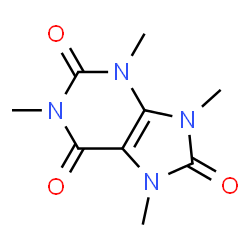Buy Theacrine from Chemsterdam!
| property | value |
|---|---|
| Common names | Theacrine, Temurin, Temorine |
| Substitutive name | 1,3,7,9-Tetramethyluric acid |
| Systematic name | 1,3,7,9-Tetramethylpurine-2,6,8-trione |
| Psychoactive class | Stimulant |
| Chemical class | Purine alkaloid |
theacrine (also known as teacrine) is a nootropic stimulant and a structural analog of caffeine, appearing to be synthesized from caffeine in some plants. it is a bitter, white crystalline purine alkaloid that increases activity in the brain and induces temporary improvements including enhanced alertness, wakefulness, and stimulation. relative to caffeine, it displays about 2/3rds the potency in terms of the stimulation it produces.
the mechanisms of theacrine largely parallel those of caffeine in that while it seems to have a stimulatory effect in rodents, this only occurs at a higher dose (and the exact oral dose where it peaks with theacrine is not known). similar to caffeine, it produces a sedative effect at relatively low doses, but where this sedative effect with caffeine is at an impractically low dose with theacrine it is the dose normally consumed by tea; this may underlie why kucha tea tends to be recommended for relaxation more than stimulation.
chemistry
theacrine’s chemical structure is structurally similar to that of caffeine. it is a synthetic alkaloid with a substituted xanthine core. xanthine is a substituted purine, which contains two fused rings, a pyrimidine and imidazole. pryimidine is a 6 membered ring with nitrogen constituents at r1 and r3; imidazole is a 5 membered ring with nitrogen substituents at r1 and r3. xanthine contains oxygen groups double-bonded to r2 and r6. like caffeine, it contains additional methyl substitutions at r1, r3, and r7 of its structure, bound to the open nitrogen groups of the xanthine skeleton. it is an achiral aromatic compound.
theacrine’s chemical name is 1,3,7,9-tetramethyluric acid; in comparison, the chemical name of caffeine is 1,3,7-trimethylxanthine, with the only difference in structure being an additional methyl group on the 9-carbon and an additional ketone group, which changes caffeine’s xanthine into a uric acid moiety.
pharmacology
theacrine acts through several mechanisms; however, like caffeine, its most important effect is to counteract a substance called adenosine that naturally circulates at high levels throughout the body (especially in the nervous system). in the brain, adenosine plays a generally protective role, part of which is to reduce neural activity levels. the theacrine molecule is structurally similar to both caffeine and adenosine, and is thus capable of binding to adenosine receptors on the surface of cells without activating them, thereby acting as a competitive inhibitor.
alongside of this, theacrine is believed to have similar effects on most of the other major neurotransmitters, including dopamine, acetylcholine, serotonin, and, in high doses, norepinephrine, and to a small extent epinephrine, glutamate, and cortisol.



AugustusP. –
NouthV. –
Buy (L)!